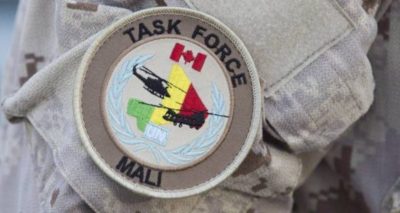
McLeod Group Blog, February 6, 2019
Mali, a vast country in West Africa on the edge of the Sahara, is receiving large amounts of assistance from Canada. But what are we doing there? Are we addressing the deeply rooted issues that make Mali an impoverished, fragile state?
Canada’s involvement in Mali came back into the public eye just before Christmas when Prime Minister Justin Trudeau made a brief visit to the Canadian military contingent in Gao, northern Mali. Canada’s much-vaunted return to peacekeeping consists of around 250 soldiers with helicopters providing medical evacuation support to the United Nations “peacekeeping” mission (known as MINUSMA), which was created to counter insecurity and political instability following a coup in 2012. Canada’s commitment is for one year, beginning in July 2018, and it has rebuffed a United Nations request to extend the mission by a few months. Experts are questioning the impact of Canada’s “quick in-and-out” commitment, estimated to cost $650 million.
Canada and Mali have also had a development cooperation relationship for over five decades. Despite the ebbs and flows of priorities and strategies in Canada’s aid program, Mali has been a leading recipient of assistance. In 2017, Canadian aid flows totalled US$94 million, making Mali the third-largest recipient of our bilateral assistance. The program has supported provision of health and educational services, agricultural development, human rights and gender equality, inclusive governance and human rights, and peace and security. But to what extent is the Canadian assistance program taking into account the instability and conflict in the country?
Mali is a country in deep crisis. In October 2018, a UN human rights expert reported a “resurgence of confrontations between members of different communities, the settling of accounts, targeted killings, the use of explosive devices, attacks on humanitarian convoys, kidnappings, robberies, rapes and sexual violence”. Some experts fear that, in 2019, Mali’s fragile state may be “tipping towards more profound failure”. The drivers of Mali’s crises are complex and interrelated – a weak state with limited reach, poor quality of justice and governance, prevalent poverty, serious climate change impacts and widespread violent inter-communal conflicts. Staffed by soldiers from France, West Africa and the United Nations, MINUSMA has been referred to as the UN’s deadliest mission in the world, with 189 peacekeepers killed since 2013, including 12 last month alone.
On the development side, the situation is stark. The United Nations 2018 Human Development Index ranked Mali 182ndout of 189 countries, with 45% of the population below the poverty line, adult illiteracy at 66% (78% for adult women) and high levels of infant and maternal mortality and malnutrition. With economic growth stagnant and climate change driving increased desertification, Mali’s development prospects are not encouraging.
There are no quick fixes to the crises in Mali. As argued by James Cohen, the long-standing and deep-rooted issues driving the instability, conflict and poverty require “a comprehensive approach to security and development that addresses socio-economic and rule of law grievances of local populations” and “facilitating dialogue with citizens and civil society”.
In July 2018, 20 community-level peacebuilding organizations came together to discuss the causes of violent conflict and the prospects for peace. The Malian civil society peace groups had several recommendations for the international community:
- Look beyond military action to building a more resilient Malian society and state […]
- Commit to support the consolidation of a functional state presence across all the communes of Mali, upon which it can gradually build an extension of its state services
- Support peace and reconciliation as a national priority, not just in the North and/or between the North and South
- Prioritise women, young people and grassroots organisations as fundamental constituents of building a more peaceful Mali, the majority among a largely rural population, and the future potential of Mali
- Provide training and coaching to build the capacity of local peacebuilding organisations across Mali.
Canada must develop and implement a multidimensional, multi-year strategy for Mali that reflects these recommendations. Continuing Canadian support for MINUSMA must be a key element of this strategy, which should also draw on Canada’s 2017 Women, Peace and Security National Action Plan. A quick in-and-out engagement with the peacekeeping effort suggests that Canada’s interest is fleeting and unreliable. We should also work with other donors to support programs aimed at improving prospects for sustainable peace through inclusive governance and the delivery of essential services to all of the population. Our Malian partners at all levels and in all parts of the country must know that Canadian assistance – both developmental and military – can be counted on as they strive to build peace, formulate and implement their development plans, reduce poverty and achieve sustainable improvement in the population’s quality of life.
Photo: Lars Hagberg, Canadian Press
